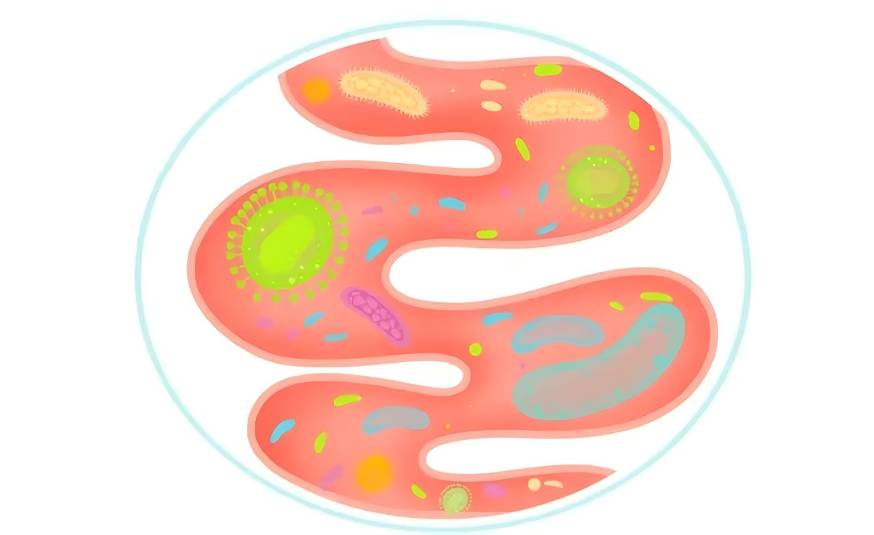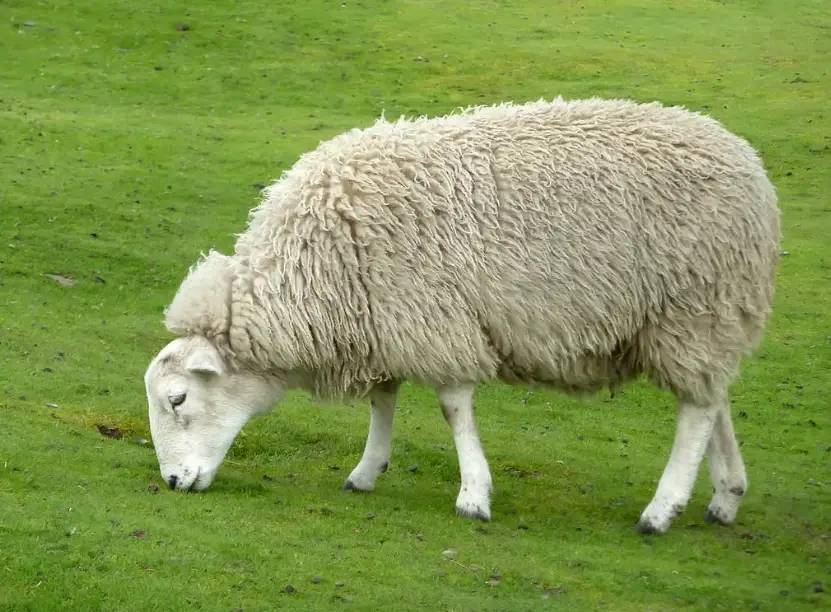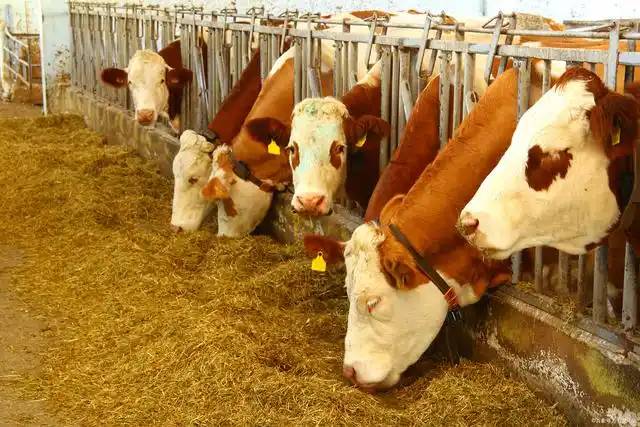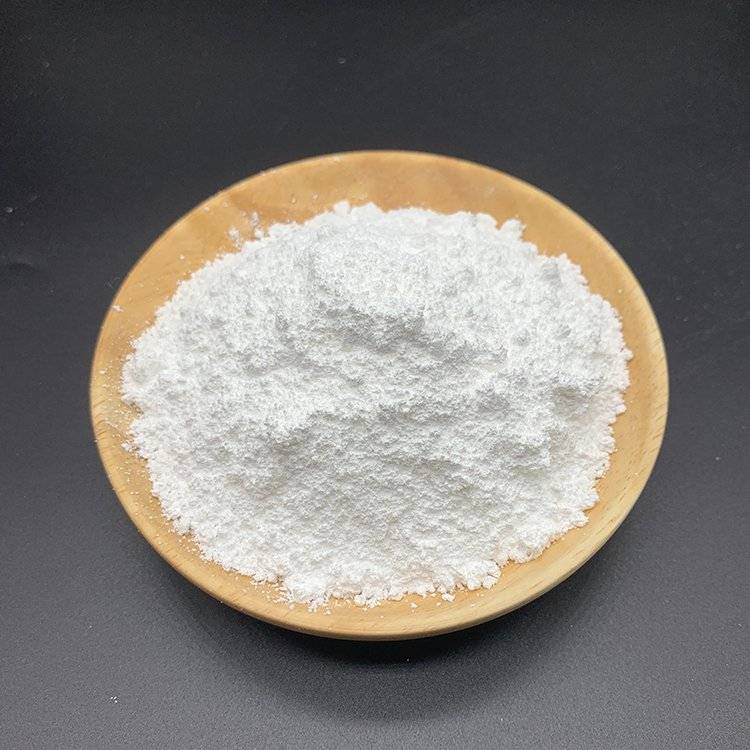What Are the Benefits of Mannan Oligosaccharides?
Mannooligosaccharides (MOS) are glucomannan protein complexes extracted by fermentation and enzymatic treatment [1], which are resistant to acid and high temperature, and their structure remains unaffected in the acidic environment of the intestinal tract and at 120°C. However, the viscosity of MOS decreases with increasing temperature, and it is stable at pH 3.0-9.0. However, the viscosity of MOS decreases with increasing temperature, and is stable at pH 3.0-9.0. MOS is safe, non-toxic, stable, and has good physicochemical properties, as well as the functions of improving the health of gastrointestinal tract and enhancing the immunity of the body.
1 Physiological functions of manno-oligosaccharides
1.1 Improvement of gastrointestinal health
The microflora of the gastrointestinal tract are interdependent with the host and play an important role in maintaining the health of the organism, enhancing the immunity of the organism and improving the absorption and metabolism of nutrients. Animal health is related to the stability of intestinal flora, and host health can be reflected by the diversity of flora. Addition of MOS to the diets of lactating dairy cows can help to increase the abundance of fiber-degrading bacteria in the rumen, thereby increasing the content of acetic acid; help to increase the abundance of lactic acid-utilizing bacteria, inhibit the abundance of lactic acid-producing bacteria, thereby reducing the accumulation of lactic acid in the rumen, and maintaining the stability of the rumen pH[2,3] , and safeguarding the rumen health.[4]
MOS stimulates the proliferation of bifidobacteria, which can produce large quantities of volatile fatty acids, such as propionic acid, and reduce intestinal pH. MOS can stimulate the proliferation of bifidobacteria[4] , produce volatile fatty acids such as propionic acid in large quantities, reduce intestinal pH, and inhibit the growth of harmful bacteria such as E. coli and Salmonella. Pathogenic bacteria such as E. coli, Salmonella, V. cholerae, and Clostridium difficile in the digestive tract of animals have a butyric structure (exogenous lectin) on their cell surface or villi, which can recognize the specific sugar molecule receptors on the cells of the intestinal wall of the animal and bind with them to generate a large number of toxins, resulting in the disruption of intestinal flora imbalance, and causing diseases [5].

MOS has a receptor structure similar to that of specific sugars, which can bind to the butyloid structure on the surface of pathogenic bacteria, and competitively binds to pathogenic bacteria to prevent them from colonizing the intestinal wall, thus inhibiting their proliferation, reducing their colonization and loss of pathogenicity, and their conjugates are excreted with the surimi through the intestinal tract. It has been reported that the addition of MOS favors the growth of beneficial bacteria such as Lactobacillus and inhibits the proliferation of harmful bacteria such as Clostridium[6] . The addition of MOS can significantly reduce the number of E. coli in the feces of calves and improve the diarrhea of calves[7] .
The health of the animal body is closely related to the health of the gastrointestinal tract, and the health of the intestinal mucosal structure has a great influence on the health of the intestinal tract, which can be evaluated by the height of intestinal folds, the height of villi, and the depth of crypts. The intestinal tract functions on the basis of villi and crypts to exchange or expand the mucosal surface area. MOS can improve the small intestinal mucosal structure, increase the height and density of villi, promote the increase of villus height/crypt depth, increase the absorption area of small intestinal villi, increase the digestion and absorption of nutrients, and repair intestinal damage to a certain extent, and improve the growth performance [8,9]. It can repair intestinal damage to a certain extent and improve growth performance[8,9] . Some studies have found that MOS improves the morphology and barrier function of small intestinal villi in lambs [9], which indicates that MOS can improve the structure of intestinal epithelium and maintain the health of the body.
1.2 Enhancement of immune function
MOS can stimulate the immune response and promote the growth and development of immune organs, and its binding to the surface receptors of some toxins, viruses and fungal cells can enhance cellular and humoral immunity [10]. Some studies have shown that MOS can bind to special receptors on the surface of immune cells, such as macrophages and neutrophils, to stimulate the immune system and activate the immune response mechanism, thus enhancing immunity[11,12] .
It has also been reported that MOS can be utilized by beneficial bacteria such as Lactobacillus and Bifidobacterium in the gastrointestinal tract to produce short-chain fatty acids to reduce the acidity of the gastrointestinal tract and inhibit the proliferation of acid-sensitive pathogens such as Escherichia coli, thus enhancing the immune system[13-15] . MOS can stimulate the release of cytokine IL-2 and accelerate the proliferation and differentiation of T-cells, thereby enhancing the immune system[16] . It has been shown that the addition of MOS to the diets of low milk fat cows increased the IgA level in blood, but had no significant effect on IgG[3] . Addition of MOS can enhance the immunity of piglets and thus reduce mortality[17] . However, some studies showed that the addition of MOS significantly increased the IgG and IgM levels in the blood of turkeys[18] . The differences in the results of the above experiments may be attributed to the different species, additives, purification process and the amount of additives, and other factors, and further relevant studies are needed.

1.3 Improvement of antioxidant capacity
Under normal conditions, the oxidative and antioxidant systems are in a dynamic balance, but under metabolic and stressful conditions, reactive oxygen species (ROS) and free radicals are generated, resulting in an oxidative stress, in which the total antioxidant capacity (T-AOC) decreases and the dynamic balance between ROS and the antioxidant defense system is disrupted, and the excess ROS undergoes lipid peroxidation to produce the cytotoxic lipid peroxidation product MDA, which damages cellular structure and function and can lead to serious metabolic diseases.
MOS can activate the antioxidant enzyme system of the body, causing the scavenging of excess reactive oxygen species (ROS) and free radicals in the body and reducing the oxidative damage to the body [10]. The addition of MOS to the diet significantly increased the activity of serum SOD, GSH-Px, T-AOC and reduced the concentration of malondialdehyde (MDA) [19], while glutathioneperoxidase (GSH-Px) and superoxide dismutase (SOD) synergized with each other to better scavenge oxidative damage [20]. The synergy between GSH Px and Superoxide Dismutase (SOD) can better scavenge free radicals in the organism, reduce the damage caused by oxidative stress, and improve the antioxidant capacity. Some studies have also shown that the addition of MOS significantly increased the T-AOC activity in the blood of Mongolian sheep at 30 d of feeding[20] , and the addition of MOS significantly increased the T-SOD and GSH-Px activities in the serum of breeding cattle[21] . The reasons for the different antioxidant effects may be attributed to the differences in animal species, feeding stage, feeding period, stress level, amount of MOS added, and MOS extraction process, etc. The antioxidant activity of MOS in the blood of breeding cattle was significantly increased by the addition of MOS.
2 MOS applied research on ruminants
MOS has been widely used in monogastric animals such as chickens, pigs and fish, but relatively little research has been conducted in ruminants. In recent years, in small ruminants, the addition of MOS to the diet significantly increased the apparent digestibility of organic matter, crude protein, crude fat, calcium, phosphorus, and unsaturated fatty acids in lambs, reduced the rate of diarrhea and the proportion of saturated fatty acids, and improved the nutrient utilization and health level[22] . 1% MOS can promote the growth and development of beach goats, reduce the feed-to-weight ratio, and improve the quality of meat, and 2% MOS significantly improves the antioxidant capacity[23] .

The addition of 2% MOS can significantly improve the antioxidant capacity[23] . Addition of MOS at a dose of 5.0-10.0g/ewe per day during the periparturient period increased feed intake, enhanced antioxidant and immunity levels, and effectively alleviated oxidative stress during the periparturient period[24] . Addition of MOS to sheep high grain diets increased rumen pH and volatile fatty acid concentration, decreased plasma lipopolysaccharide (LPS) concentration, reduced cuticle thickness, and improved rumen epithelial health[25] . Addition of MOS to the diet improved rumen fermentation in fattening sheep[26] .
MOS has a tendency to increase N retention and retention, NDF and ADF digestibility in sheep and is effective in improving antioxidant capacity[19] . A similar study found that MOS improved nutrient utilization and rumen nitrogen metabolism in sheep[27] . Addition of MOS to the diet of lake sheep stimulated rumen papilla development, regulated meat color and fatty acids, improved meat quality, and increased rumen pH to maintain a stable rumen environment[28] .
In large ruminants, the addition of MOS to whole milk tended to increase calf feed intake and calf weight from 26 to 46 days of age, but did not significantly improve calf diarrhea[29] , and some studies have shown that supplementation of calves with MOS improves fecal scores and feed intake, and can be used as an alternative to antibiotics[30] . Addition of MOS to the diet effectively reduced endotoxin levels in plasma and feces of beef cattle, and did not significantly affect the apparent digestibility of nutrients, but had a tendency to increase daily weight gain and feed intake, and reduce the feed-to-weight ratio[31] . Addition of MOS to Holstein bull rations increased rumen fluid pH and volatile fatty acid concentration, decreased NH3 concentration and plasma LPS and serum amyloid A concentrations, and improved the rumen environment of beef cattle[32] . The addition of MOS can promote the balance of rumen homeostasis, inhibit the proliferation of pathogenic bacteria, increase the abundance of fiber-degrading bacteria, and enhance the fiber-degrading ability of the rumen in low-lactose cows[2] .
Supplementation of periparturient dairy cows with MOS at 15g per head per day significantly increased rumen volatile fatty acid concentration, acetic acid to propionic acid ratio, and microbial protein content, and improved rumen fermentation[33] . Supplementation of pre-partum cows with MOS resulted in a significant increase in colostrum at the first milking[34] . It has been reported that the addition of MOS to the diet of dairy cows significantly increased milk production, which may be related to the combined effects of MOS in inhibiting and eliminating intestinal pathogenic bacteria and improving the immune system of dairy cows.35 MOS can inhibit the proliferation of gastrointestinal pathogens and reduce the amount of toxic metabolites such as toxins, amines, ammonia, and indole, and improve the structure of the rumen flora and the gut, which can help to maintain the health of the organism and improve the performance of the growth.
3 Outlook
MOS has the characteristics of low dosage, safety, no residue and strong stability, and its application in ruminants can improve the immunity of the animal body, improve the health of the animal body, and enhance the growth performance by improving the gastrointestinal flora, inhibiting the intestinal pathogenic bacteria and improving the intestinal structure, so the application prospect is good. However, the application effect of MOS is affected by the dosage, feeding management level, age of animals, composition of feedstuffs and other factors, and the application effect varies. In the future, we should strengthen the research on the process of MOS, simplify the operation, develop new process and reduce the cost, so as to provide a broader space for the application of MOS in ruminants.
References:
[1] Vimalkumar Prajapati,Swati Patel,Vaibhav Mehta, et al. Biotic Elicitors[M].Springer Us, 2022: 107-114.
[2] XU Xiaofeng, GUO Tingting, GUO Cheng, et al. Study on the regulation of rumen bacterial flora of high concentrate-induced low-milk-fat dairy cows by mannan oligosaccharides[J]. Journal of Animal Nutrition, 2019, 31(11): 5245-5255.
[3] Guo Tingting. Study on ruminal fermentation and milk fat regulation of high concentrate-induced low milk fat dairy cows by mannan oligosaccharide[D]. Yinchuan:Ningxia University, 2019.
[4] QI Ru, LIN Ying-Ting. Application of mannan oligosaccharide in ruminants[J]. China Feed, 2011, 4: 24-28.
[5] Luo Xianyang,Xu Leilei. Application of mannan oligosaccharide in livestock breeding production[J]. Feed Expo, 2018, 12: 27-29, 34.
[6] WEN Ruozhu,JIANG Yun,LIU Zexing,et al. Effects of mannan oligosaccharide on the development of intestinal microbiota in broiler chicks[J]. Journal of Zhejiang University (Agriculture and Life Sciences), 2011, 37(1): 83-90.
[7] Sudipta Ghosh,Ram Mehla. Influence of dietary supplementation of prebiotics (mannanoligosaccharide) on the performance of crossbred calves[J]. Tropical Animal Health and Production, 2011, 44(3): 617-22.
[8] Li Y. Effects of mannan oligosaccharides on growth performance and non-specific immunity of young Jian carp[D]. Ya'an:Sichuan Agricultural University, 2011.
[9] ZHENG Chen, LI Fadi, LI Fei, et al. Effects of adding mannan oligosaccharide to milk replacer on the gastrointestinal tract development of 7-28 days old lake sheep lambs[J]. Chinese Agricultural Science, 2020, 53(2): 398- 408.
[10] LIU Shiqi, HE Yujia, SHEN Yuzheng, et al. Physiological functions of mannan-oligosaccharides and their research progress in livestock and poultry production[J]. China Feed, 2019, 17: 8-15.
[11] ZANG Xiao, LIU Zhao, ZHAO Tiancheng, et al. Effects of mannan-oligosaccharides on growth performance, serum immunity and antioxidant indexes and organ indexes of Ussuri raccoon during winter fur period[J]. Feed Industry, 2021, 42(23): 58-64.
[12] Longshan Qin,Wei Ji,Jianlin Wang,et al. Effects of dietary supplementation with yeast glycoprotein on growth performance, intestinal mucosal morphology, immune response and colonic microbiota in weaned piglets.[J]. Food & function, 2019, 5.
[13] TANG Ling, KWONG Sheng-Yao, FENG Lin, et al. Effects of mannan oligosaccharide on intestinal flora and immune function of aquatic animals[J]. China Animal Husbandry & Veterinary Medicine, 2008, 6: 21-25.
[14] YU Yanmei,WU Zhixin,CHEN Xiaoxuan,et al. Effects of konjac mannan oligosaccharide on non-specific immune function and growth of Pelteobagrus fulvidraco[J]. Journal of Central China Agricultural University, 2010, 29(3): 351- 355.
[15] MA Zhi-Hong, ZHANG Qing-Bo, SHI Xiang-Guo, et al. Effects of mannan oligosaccharide on immune function in immunocompromised mice[J]. Anhui Agricultural Science, 2009, 37(16): 7462-7463.
[16] CHEN Wen-Bin,AI Wei. Progress in the application of mannan oligosaccharide[J]. China Feed, 2004, 4: 28-30.
[17] NG Chun-zao, WANG Jian-hua. Effects of lactic acid bacteria and mannan oligosaccharide on growth and serum biochemical indexes of weaned piglets[J]. Jiangsu Agricultural Journal, 2011, 27(1): 94-99.
[18] Nazmi Çetin, Kubilay Güçlü, Ebru Çetin. The Effects of Probiotic and Mannanoligosaccharide on some Haematological and Immunological Parameters in Turkeys[J]. Journal of Veterinary Medicine. A, Physiology, Pathology, Clinical Medicine, 2005, 52(6): 263-7.
[19] ZHENG Chen. Effects of exogenously added mannan oligosaccharide on nutrient digestion and metabolism, rumen fermentation, digestive tract coeliac flow and immunity in sheep[D]. Lanzhou:Gansu Agricultural University, 2012.
[20] XIE Mingxin, WANG Hairong, YANG Jinli, et al. Effects of yeast mannan oligosaccharide on growth performance, serum immunity and inflammation and antioxidant indexes in Mongolian sheep[J]. Journal of Animal Nutrition, 2018, 30(1): 219-226.
[21] LIANG Jinfeng, WEN Xinwang, ZHOU Xiaoqi, et al. Effects of adding oligosaccharides and probiotic complexes to TMR diets on growth performance, immune function and antioxidant function of breeding cattle[J]. Feed Industry, 2019, 40(15): 41-44.
[22] Ting Liu,Fadi Li,Jianfeng Xu, et al. Metabolome Analysis Reveals Potential Mechanisms of Mannan Oligosaccharides to Improve Health, Growth Performance, and Fatty Acid Deposition in Hu Lambs[J]. Agriculture, 2022, 12(9): 1327.
[23] WANG Tian,WANG Xue,LI Qingmin,et al. Effects of adding mannan-oligosaccharides to chemically treated rice straw rations on the performance and antioxidant capacity of beach goats[J]. Journal of Animal Nutrition, 2021, 33(4): 2136-2145.
[24] ZHANG Saiwei,DUAN Chunhui,ZHANG Xinyan,et al. Effects of mannan oligosaccharide on feed intake, body weight and serum biochemical indexes of periparturient ewes[J]. Journal of Animal Nutrition, 2023, 35(3): 1791-1802.
[25] Tatiana Garcia Diaz,Antonio Ferriani Branco,Fernando Alberto Jacovaci, et al. Inclusion of live yeast and mannan-oligosaccharides in high grain -based diets for sheep: ruminal parameters, inflammatory response and rumen morphology[J]. Plos one, 2018, 13(2): e0193313.
[26] LING Baoming, QU Mingren, LU Dexun. Effects of mannan oligosaccharide on the fermentation of rumen in growing sheep[J]. Contemporary Animal Husbandry, 2006, 6: 35-37.
[27] Chen Zheng, Juwang Zhou, Yanqin Zeng, et al. Effects of mannan oligosaccharides on growth performance, nutrient digestibility, ruminal fermentation and hematological parameters in sheep[J]. Peerj, 2021, 9: e11631.
[28] Liu E-Hui. Effects of dietary mannan oligosaccharide on growth and slaughtering performance, gastrointestinal tissue morphology and microbiota of lake sheep [D]. Lanzhou: Gansu Agricultural University, 2021.
[29] C. Uzmay, A. Kılıç, I. Kaya, et al. Effect of mannan oligosaccharide addition to whole milk on growth and health of Holstein calves[J]. Archives Animal Breeding, 2011, 54(2): 127-136.
The effects of the amount, body weight and serum biochemical indexes[J]. Journal of Animal Nutrition, 2023, 35(3): 1791-1802.
[25] Tatiana Garcia Diaz,Antonio Ferriani Branco,Fernando Alberto Jacovaci, et al. Inclusion of live yeast and mannan-oligosaccharides in high grain -based diets for sheep: ruminal parameters, inflammatory response and rumen morphology[J]. Plos one, 2018, 13(2): e0193313.
[26] LING Baoming, QU Mingren, LU Dexun. Effects of mannan oligosaccharide on the fermentation of rumen in growing sheep[J]. Contemporary Animal Husbandry, 2006, 6: 35-37.
[27] Chen Zheng, Juwang Zhou, Yanqin Zeng, et al. Effects of mannan oligosaccharides on growth performance, nutrient digestibility, ruminal fermentation and hematological parameters in sheep[J]. Peerj, 2021, 9: e11631.
[28] Liu E-Hui. Effects of dietary mannan oligosaccharide on growth and slaughtering performance, gastrointestinal tissue morphology and microbiota of lake sheep [D]. Lanzhou: Gansu Agricultural University, 2021.
[29] C. Uzmay, A. Kılıç, I. Kaya, et al. Effect of mannan oligosaccharide addition to whole milk on growth and health of Holstein calves[J]. Archives Animal Breeding, 2011, 54(2): 127-136.
-
Prev
Green Spring Technology Provides Fully Traceable, High-Stability Epimedium Extract Solutions
-
Next
What Are Mannan Oligosaccharides (MOS)?


 English
English French
French Spanish
Spanish Russian
Russian Korean
Korean Japanese
Japanese




